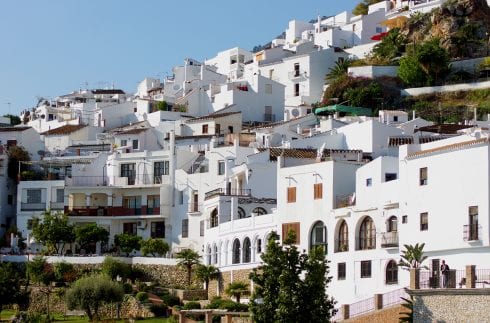TWO charming villages in Malaga have held onto a place in the official ‘100 most beautiful pueblos in Spain’ list.
The ranking, by National Geographic, is updated every year, with thousands of picturesque towns vying to be named among the cream of the crop.
READ MORE: Must-visit: The white-washed village dubbed ‘the cradle of Andalucian pride’
Among them this year is Casares, which just scrapes into the top 100 at number 94.
Casares, with around 8,000 inhabitants, is located southwest of Malaga, on the border with the province of Cadiz – about a 40-minute drive from Marbella.
National Geographic praised its ‘narrow and winding centuries-old slopes’ and impressive Casares Castle.
The fortress was first built by the Arabs in the 1200s and was used to defend the then-ruling Nasrid kingdom.


Budding visitors should also stop by the Iglesia de la Encarnacion, which boasts a Mudejar bell tower.
National Geographic added: “It is difficult to imagine Casares without its viewpoints, from where you can get a panoramic view tinged with an enchanting whitewash, with the layout of its houses resembling stacked sugar cubes.”
Another big attraction is the Baños de la Hedionda, a Roman spa located in the valley of the Rio de Manilva (Manilva river).
The place is famous for its sulphurous waters, as they are believed to have healing properties.
Although access is free, you will need to make a reservation in high season, from June to September.
Also making the list in Malaga, and at a higher ranking of 64, is once again, Frigiliana.
The quaint town is undoubtedly one of the most charming municipalities in southern Spain.



It’s filled with narrow, steep and zigzagging streets and its deep Muslim roots are embodied in its urban layout.
The hill that takes you atop the village, El Fuerte, was the scene of the final bloody defeat of the Moors of La Axarquia in their 1569 rebellion.
Don’t miss a visit to Barribarto, the Moorish quarter of Frigiliana, which is packed with charming squares.
National Geographic previously wrote: “El Barribarto, its old quarter, invites you to stroll through streets with whitewashed walls adorned with flower pots, while you discover stairways, passageways and hidden courtyards, and corners with tiles that tell stories and local legends.”








